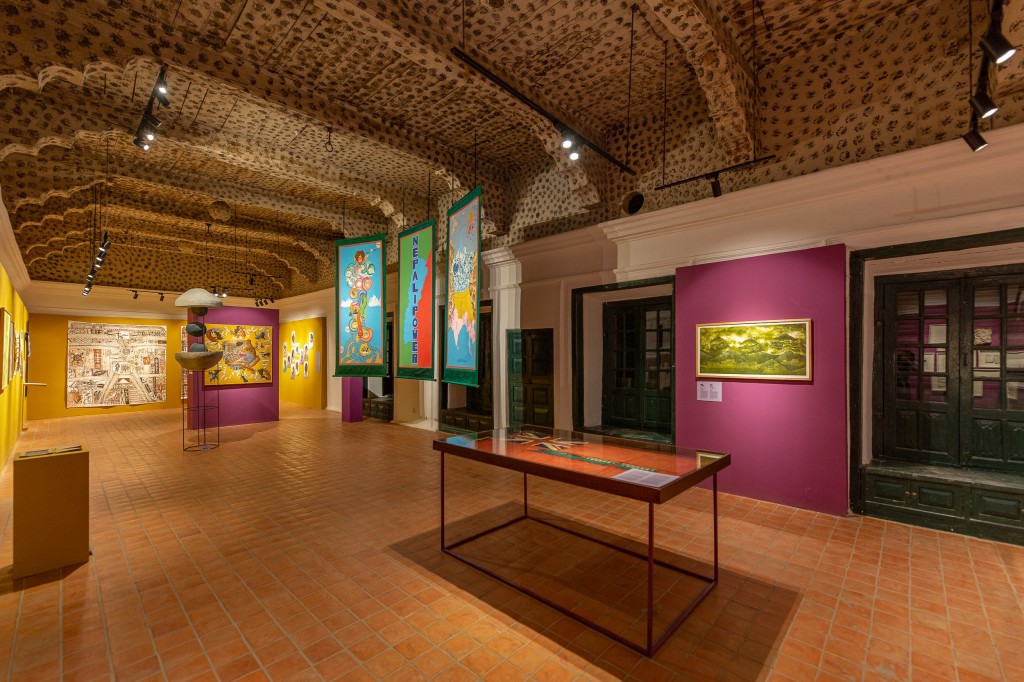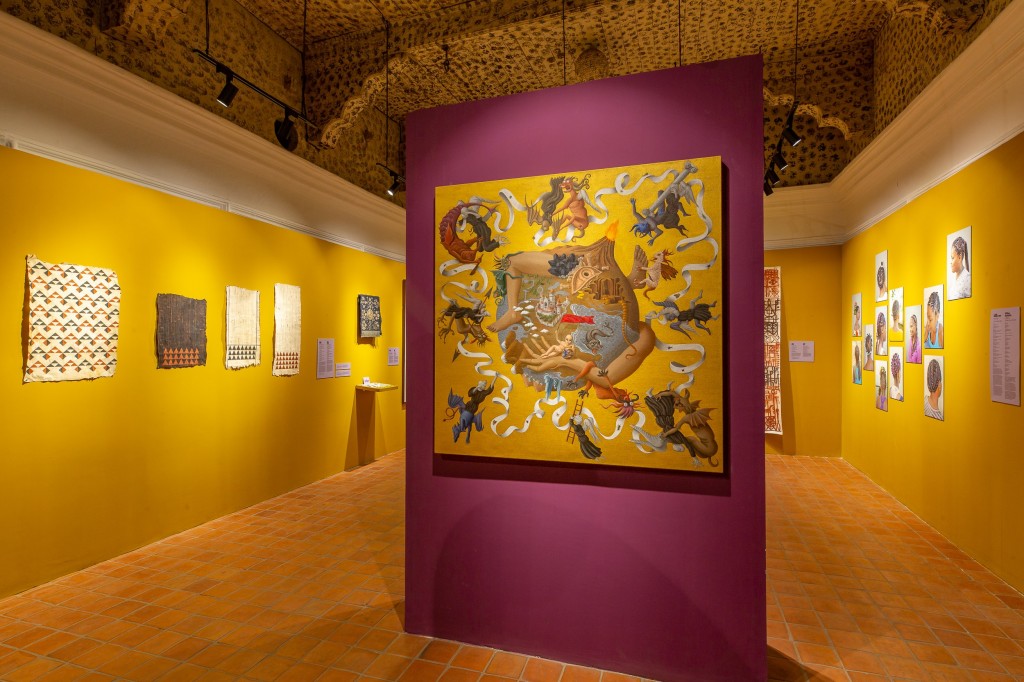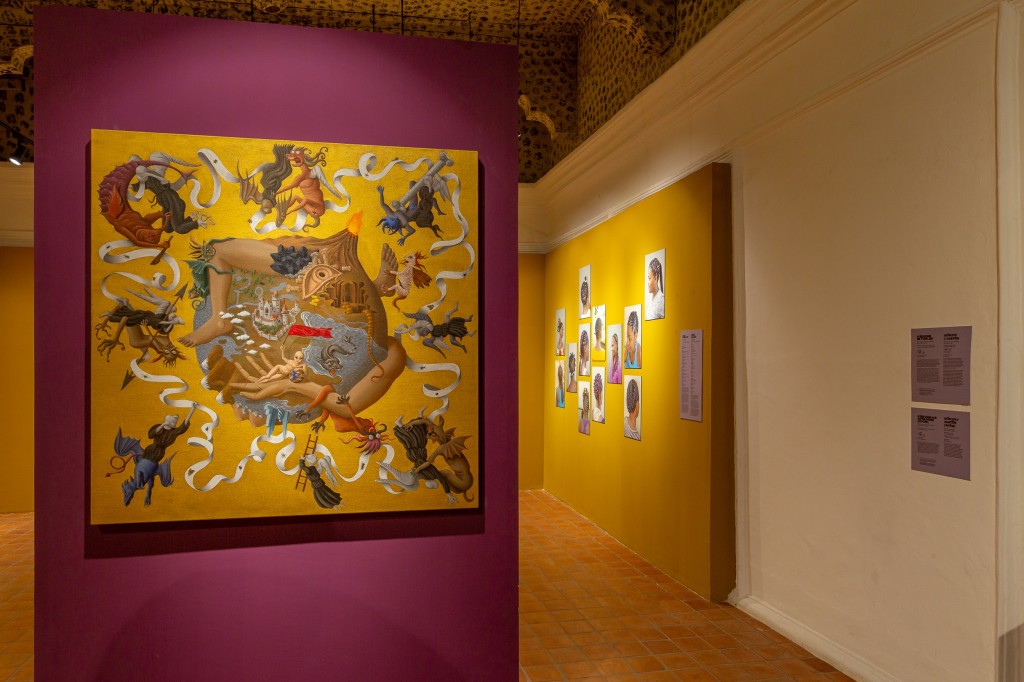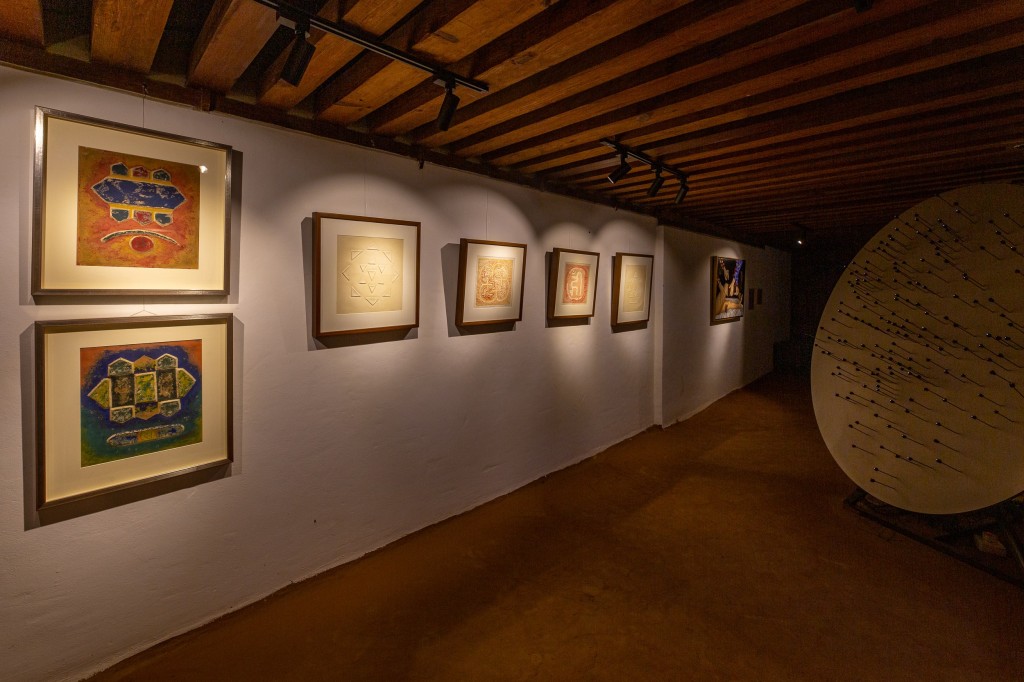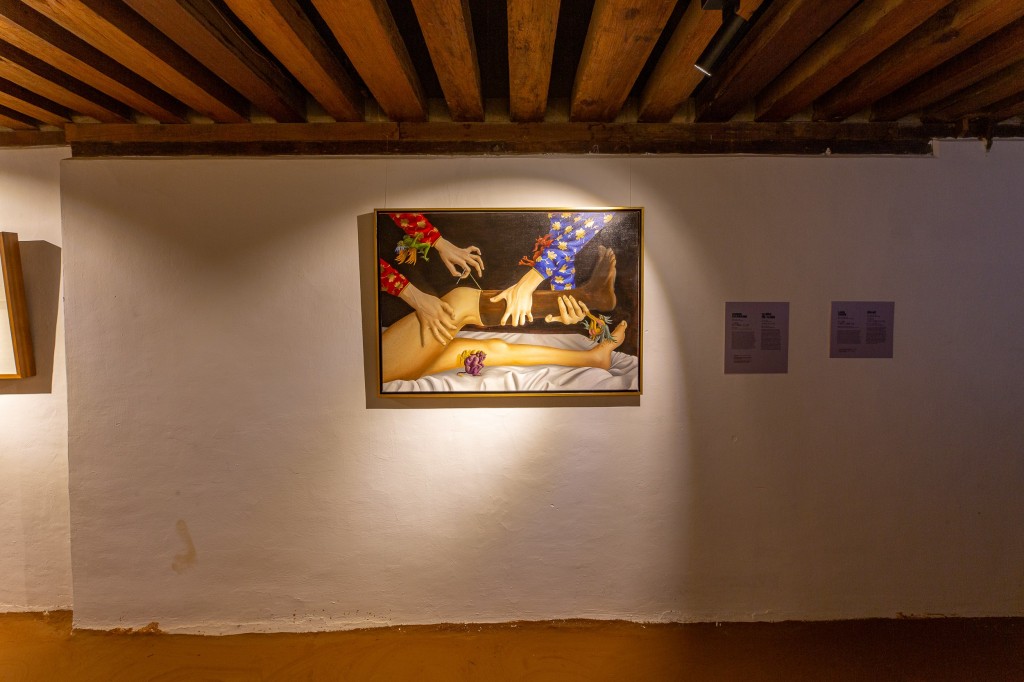
Kathmandu Triennale 2077 takes place 11 February – 31 March, 2022, across five culturally and historically significant venues in Kathmandu, in three clusters: Patan, Boudha, Kathmandu. Slated to be the largest presentation of contemporary art in Nepal to date, the Triennale exhibits works by over 130 artists and collaborators from more than 40 nations. A robust public programme of artist talks, panel discussions, workshops, guided tours and other events are also held alongside the exhibition.
Curatorial Note
This edition of the Kathmandu Triennale has been intensively prepared over the past three years. The first year saw hopeful uprisings across continents clamouring against an order that was breaking, and the subsequent two were marked by the order breaking down under unexpected pressure, while unleashing more demons and entrancements along the way. Kathmandu Triennale 2077, both in its infrastructural development as well as in its artistic and intellectual propositions, has been supported throughout these cycles by the strength and steadfastness of a crucial and critical dialogue between more than 130 artists, collectives, and collaborators from over 50 nations that the project brings together. They represent vast depths of ancestral knowledge and its contemporary manifestations, histories of resistance and constant reinvention, the exuberance of imagination, and the power of speaking out. Today, the conversations proposed in the Triennale’s framework at the beginning of our journey seem to resonate louder still – across geo-political borders, boundaries of time, and ever-changing divides between people – to present an exhibition and programme with empathy, drawn from our global collective experience and memory.
Contemporary art has been a rather controversial category in many contexts over the past three decades. As a consequence of its novelty, it has often been regarded as an alien body, either to be rejected or, on the contrary, to be embraced. It has nevertheless been commonly seen as a separate system from what were otherwise considered local languages. These conversations have not only informed the Nepali art scene but many other contexts around the world. They have also brought to the fore important questions about local culture and identity as well as the politics of the global circulation of ideas and art forms. As we seriously consider the possibility of different cosmologies, from politics to technology, to inform the ways in which we imagine the future of the twenty-first century, Kathmandu Triennale, 2077 thus asks: Could we imagine art to remain the same coherent system, with a universal claim and a unified aesthetic? As we attempt to find solutions for the dilemmas of plurality in an increasingly interconnected world, could art as a single concept even survive? And should it?In Kathmandu Triennale 2077, a central position is occupied by artists working with and from within multiple aesthetic and cosmological perspectives and meanings in their works, manifesting the multiplicities that construct our kaleidoscopic global reality. These include practices that have been systematically excluded from the realm of art and designated by a colonial ethnographic gaze as craft, folklore, or at best, “traditional” art, even though these practices often perform analogous cultural and social functions in their communities as art does in the system of global society, and are also constantly evolving and embodying the traces of their contextual transformation and of this often-disobedient instability. In this line of thinking, Kathmandu Triennale 2077 is particularly interested in contemporary practices where Indigenous perspectives operate in the field of technology, where bodies and traditions are queered, where masks and rituals are the site of continuously negotiated identities rather than essences, and where folklore is the battlefield of decoloniality, counterculture, and criticality.
Kathmandu Triennale 2077 seeks to expand the consideration of contemporary artistic practices to include materiality and media from various communities in Nepal and from around the world, including different forms and lineages of object, image, and sound making that transversed or unfolded in parallel to the fractures of the modern. The Triennale discusses appropriate frameworks of understanding and bringing together these multiple aesthetic and cosmological lineages active today, from paubha painting in Nepal, ink art in East Asia, and barkcloth in the Pacific to body marking and weaving around the world and other artistic languages often marginalised in global discourses on contemporary art. But the Triennale is also looking beyond the dominant traditions in these contexts, showcasing practices from communities that have often been subjected to processes of internal colonisation by their own, often post-colonial, state and its official cultural narratives.
These are nevertheless more than formal exercises that seek to open a wider conversation about different cosmologies and meaning in the realms of spirituality, forms of healing, memory preservation, representation of mythology, and collective celebrations. Broadening the field of what gets counted today as art has political implications; it is part of an effort to decolonise our conscience, moving beyond the category of art as defined by the colonial legacies of many specific contexts as well as of our shared global culture. These are shown in parallel with an effort to revisit the reception and influence of several figures from decades of Nepali art history.
The Triennale is also crucially interested in Indigenous knowledge that is active and subversive, working towards the upending of patriarchal structures and dominant national frameworks, creating a new global solidarity of places and communities of resistance. Works from across continents are being exhibited, placing Nepal on a different geography, beyond the regions that it is commonly considered in. Bringing new constellations of coordinates is also pursued by thinking about Nepal among a list of other countries who have defined their modern identity along the complicated and imprecise narrative of being the sole countries in their regional contexts to not have been colonised, including Thailand and Tonga, creating many common experiences including delaying the urgency to decolonise their cultural narratives. Decades of political tragedy, the layers of destruction that have brought both trauma and resistance to the fore, and the shared experience of contemporaneity as a recent and precarious bridgehead over catastrophe creates a community of memory alongside Nepal, drawn from different geographies, from Southeast Asia to Latin America. Nepal’s status as a country of mass emigration opens up yet another definition of an internationale.
Lastly, in regards to our sparse and somewhat curious title. For us, “2077” is both a cemented, stagnant time and a fluid, unpredictable variant. We have retained this spectral title for the current edition after having first adopted it in a shift of perspective towards our locality and in intellectual solidarity with the many efforts to decolonise our references: 2077 in the Nepali Bikram Sambat calendar was 2020 in the Gregorian calendar, the original year for this edition. As the repeated postponement, dark periods of uncertainty, as well as new reflections and possibilities–all ripple effects of that ill-fated year–have inextricably shaped this project, acknowledging it is an act of humility and honesty towards this journey. All the while, the time of the Triennale has also become arbitrary and nonlinear; it exists at once in the past and the future of 2077, and the present of 2022. It mediates between systems of counting time, uneasy synchronicities, and struggles to escape and reclaim histories, often running afoul of each other. These multiplicities and displacements across time are reflected in the themes and artists of the Triennale, driven by the active and subversive perspectives and artistic languages of many communities in Nepal and around the world who have often been relegated from the colonially derived canons of contemporary art.
